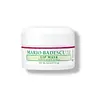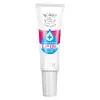What's inside
What's inside
 Key Ingredients
Key Ingredients

 Benefits
Benefits

 Concerns
Concerns

 Ingredients Side-by-side
Ingredients Side-by-side

1,2-Hexanediol
Skin ConditioningBis-Diglyceryl Polyacyladipate-2
EmollientButyrospermum Parkii Butter
Skin ConditioningCaprylyl Glycol
EmollientCarica Papaya Seed Oil
HumectantCarthamus Tinctorius Seed Oil
MaskingCocos Nucifera Fruit Extract
EmollientCocos Nucifera Oil
MaskingEuterpe Oleracea Fruit Oil
Skin ConditioningParfum
MaskingGlycine Soja Oil
EmollientHelianthus Annuus Seed Oil
EmollientHydrogenated Styrene/Isoprene Copolymer
Hydrogenated Polyisobutene
EmollientHydrogenated Styrene/Butadiene Copolymer
Microcrystalline Wax
Emulsion StabilisingPentaerythrityl Tetra-Di-T-Butyl Hydroxyhydrocinnamate
AntioxidantPolybutene
Sambucus Nigra Fruit Extract
AstringentSqualane
EmollientSucrose Tetrastearate Triacetate
EmollientSynthetic Wax
AbrasiveTetrahexyldecyl Ascorbate
AntioxidantTocopherol
AntioxidantVanilla Planifolia Fruit Extract
Skin Conditioning1,2-Hexanediol, Bis-Diglyceryl Polyacyladipate-2, Butyrospermum Parkii Butter, Caprylyl Glycol, Carica Papaya Seed Oil, Carthamus Tinctorius Seed Oil, Cocos Nucifera Fruit Extract, Cocos Nucifera Oil, Euterpe Oleracea Fruit Oil, Parfum, Glycine Soja Oil, Helianthus Annuus Seed Oil, Hydrogenated Styrene/Isoprene Copolymer, Hydrogenated Polyisobutene, Hydrogenated Styrene/Butadiene Copolymer, Microcrystalline Wax, Pentaerythrityl Tetra-Di-T-Butyl Hydroxyhydrocinnamate, Polybutene, Sambucus Nigra Fruit Extract, Squalane, Sucrose Tetrastearate Triacetate, Synthetic Wax, Tetrahexyldecyl Ascorbate, Tocopherol, Vanilla Planifolia Fruit Extract
Ingredients Explained
These ingredients are found in both products.
Ingredients higher up in an ingredient list are typically present in a larger amount.
Parfum is a catch-all term for an ingredient or more that is used to give a scent to products.
Also called "fragrance", this ingredient can be a blend of hundreds of chemicals or plant oils. This means every product with "fragrance" or "parfum" in the ingredients list is a different mixture.
For instance, Habanolide is a proprietary trade name for a specific aroma chemical. When used as a fragrance ingredient in cosmetics, most aroma chemicals fall under the broad labeling category of “FRAGRANCE” or “PARFUM” according to EU and US regulations.
The term 'parfum' or 'fragrance' is not regulated in many countries. In many cases, it is up to the brand to define this term.
For instance, many brands choose to label themselves as "fragrance-free" because they are not using synthetic fragrances. However, their products may still contain ingredients such as essential oils that are considered a fragrance by INCI standards.
One example is Calendula flower extract. Calendula is an essential oil that still imparts a scent or 'fragrance'.
Depending on the blend, the ingredients in the mixture can cause allergies and sensitivities on the skin. Some ingredients that are known EU allergens include linalool and citronellol.
Parfum can also be used to mask or cover an unpleasant scent.
The bottom line is: not all fragrances/parfum/ingredients are created equally. If you are worried about fragrances, we recommend taking a closer look at an ingredient. And of course, we always recommend speaking with a professional.
Learn more about ParfumPolybutene is used to help control the viscosity of a product. This just means it helps adjusts the texture.
It is a polymer and does not get absorbed into the skin due to its large size.
Studies found this ingredient did not irritate skin in concentrations below 15%.
Learn more about Polybutene